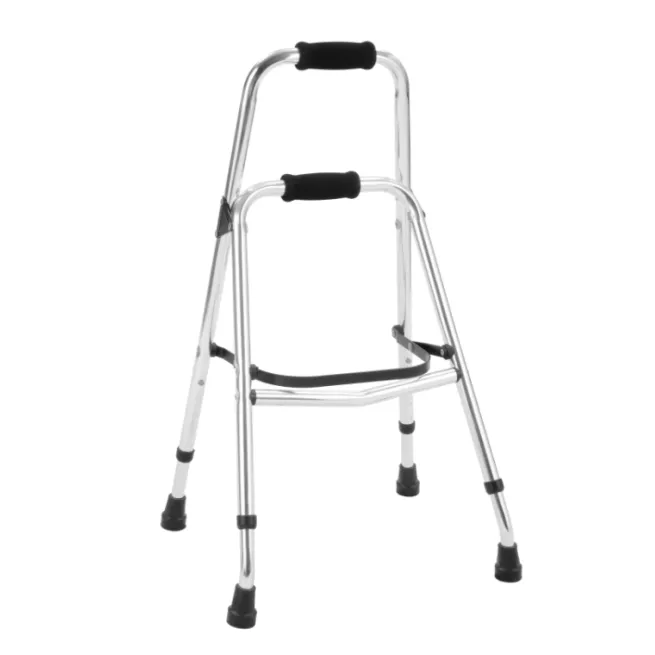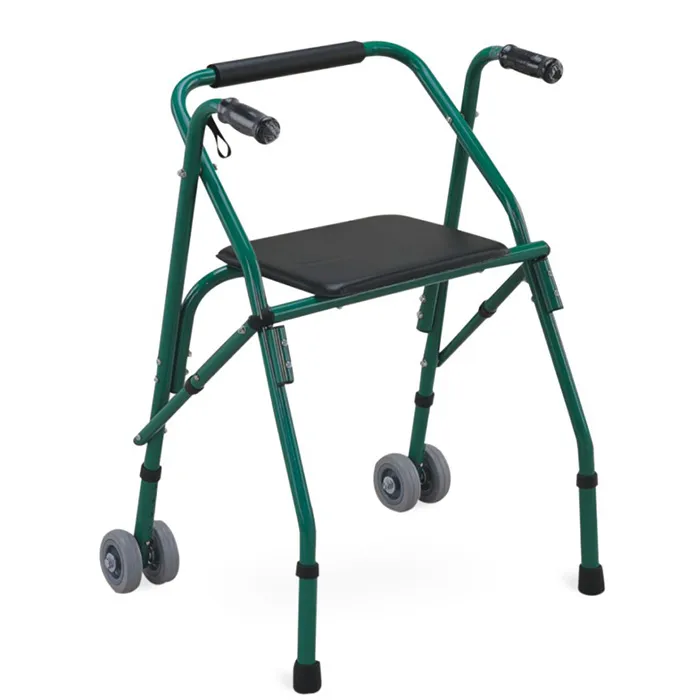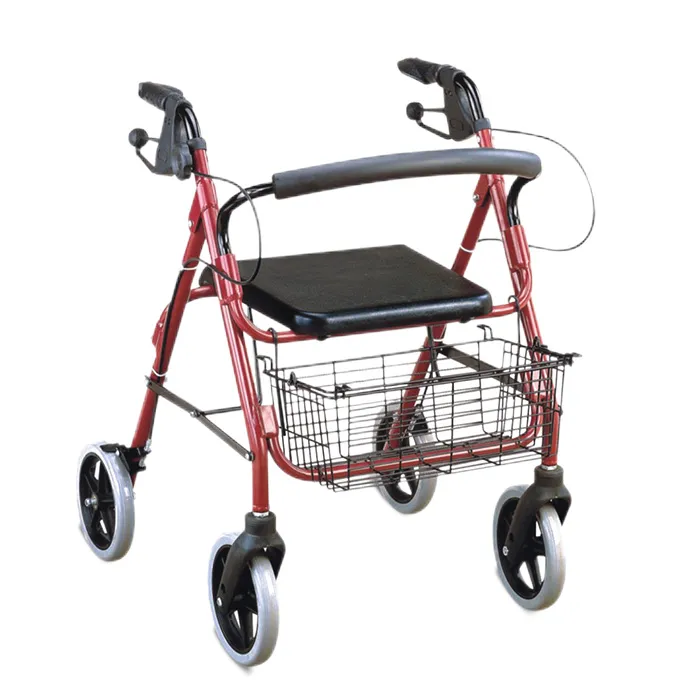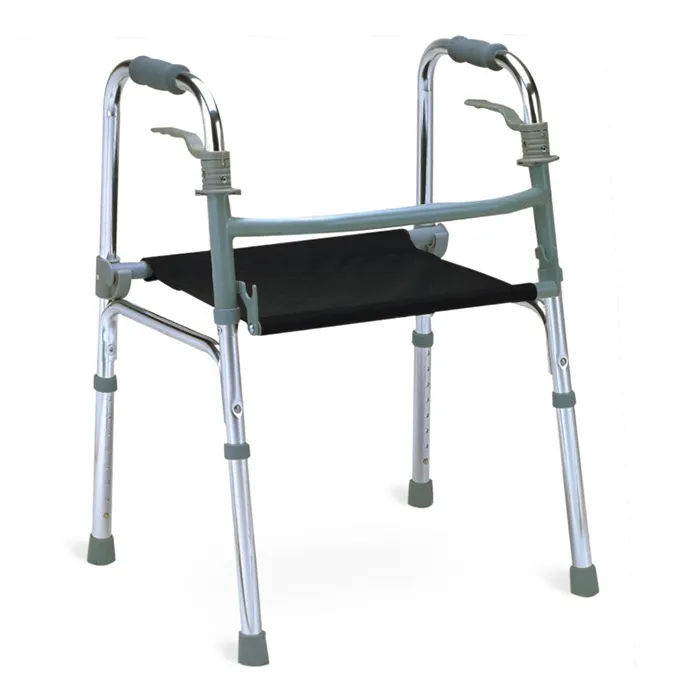As air travel becomes increasingly popular, more and more elderly people and people with limited mobility choose to travel by plane, and rollator walkers (also known as walking aids or walkers) as an important mobility aid are becoming an indispensable companion on the journey.
However, many passengers often have questions before traveling: "Can I bring a foldable rollator walker on an airplane?" Around this question, this article will conduct a professional, systematic and detailed analysis of the definition, types, air transportation regulations, safety standards, airline policies, boarding procedures, user information and other aspects of rollator walkers, to help passengers understand and use rollator walkers for air travel more scientifically.

What is a rollator walker?
A rollator walker is a mobility aid designed for people with reduced mobility, patients in rehabilitation and the elderly. A rollator walker usually has four wheels, a lightweight metal frame, an auxiliary brake system, and functions such as armrests and seats. Compared with crutches and canes, rollator walkers provide better support and balance, can effectively reduce the pressure on the lower limbs, and help users keep their bodies stable while walking.
Rollator walkers can be roughly divided into the following categories according to their structure and function:
● Standard rollator walker: simple structure, mainly used for short-distance walking indoors.
● Rollator walker with seat: comes with a foldable seat, suitable for resting during long-distance walking.
● Foldable rollator walker: can be easily folded, convenient for storage and carrying, and is the most common type of rollator walker in air travel.
● Lightweight rollator walker: made of lightweight materials such as aluminum alloy, suitable for daily carrying and travel.
In the context of air travel, the "foldable rollator walker" discussed in this article mainly refers to those rollator walkers that are easy to transport and can be folded and stored.
What are the principles of air transport policy for rollator walkers?
Globally, there is a certain consensus in the civil aviation transport field on the policy of using walking aids for people with limited mobility. The International Civil Aviation Organization (ICAO) and the Civil Aviation Administration of many countries have provided policy support for carrying walking aids on board, and require airlines to provide reasonable convenience for users.
According to aviation transportation practices and regulations, rollator walkers are classified as mobility aids in air travel, and are special assistance items like wheelchairs, crutches, prostheses, etc. These devices are allowed to be checked in or brought into the cabin free of charge in most cases.
The following are the basic principles:
● Not considered as regular baggage: Rollator walkers are usually not counted in the free baggage allowance of passengers;
● Priority check-in or bring into the cabin: If the rollator walker is compact and meets the size requirements, it can be brought into the cabin; if it exceeds the standard, it needs to be checked in;
● Free check-in policy is generally applicable: Most airlines allow passengers to check in one walking aid for free;
● Special assistance rights protection: Airlines must provide rollator walker users with boarding, disembarking, waiting and other assistance.

How to determine whether a foldable rollator walker can be on board?
Regarding the core question of "Can foldable rollator walkers be brought on board?", we need to analyze the following aspects one by one:
1. Are the size and weight compliant?
Whether a foldable rollator walker can enter the cabin depends on whether its folded volume meets the airline's size restrictions for carry-on items.
The standard for hand luggage on international flights is generally:
● Length not exceeding 55 cm
● Width not exceeding 35 cm
● Height not exceeding 25 cm
● Weight is usually limited to between 7–10 kg
The folded size of most foldable rollator walkers exceeds the above restrictions, but some lightweight rollator walkers can be stored in a smaller size and have a certain probability of meeting the cabin carrying conditions. If it exceeds this range, it must be checked in.
2. Does it meet aviation safety requirements?
The design of a foldable rollator walker must meet certain safety regulations. Including:
● The material is stable and has no sharp corners;
● The folding device is firm and reliable, and it is not easy to unfold automatically during flight;
● It does not contain flammable batteries (such as some rollator walkers with electric functions);
● It does not occupy the escape route or hinder emergency evacuation.
Most traditional manual foldable rollator walkers meet the above standards, so they are allowed to be brought on board from a safety perspective.
3. Can passengers use it independently or assist in operation?
When evaluating whether a foldable rollator walker can be brought into the cabin, airlines will also consider the following operational factors:
● Whether passengers can fold it by themselves or with the help of others;
● Whether the foldable rollator walker can be placed in the luggage compartment or under the seat;
● Whether it will hinder other passengers from entering or exiting or operating safely.
For foldable rollator walkers that are small in size and easy to operate, if passengers can manage it by themselves or have someone to help manage it, they are more likely to be allowed to be brought into the cabin.

Comparison of specific policies of different airlines
Although aviation regulators in various countries have unified requirements for walking aids, different airlines have different operational details. Here are some general trends:
Most international airlines (such as Air China, United Airlines, and Lufthansa):
● Passengers are explicitly allowed to carry foldable rollator walkers and provide free check-in services;
● If the foldable rollator walker meets the size requirements, it can be carried on board;
● If it needs to be checked in, it is usually checked in at the boarding gate and returned first after landing;
Low-cost airlines (such as Air Asia and Ryanair):
● Also support the check-in of walking aids;
● Some airlines require advance declaration;
● The equipment needs to undergo additional security checks at check-in;
Domestic airlines:
● Rollator walkers are usually allowed to be checked in free of charge;
● Passengers need to notify customer service at least 48 hours in advance to apply for special assistance;
● It is not allowed to occupy the escape exit area to place walking aids;
Therefore, passengers should actively check the specific terms of the airline they are traveling with before traveling, and choose the appropriate carrying method according to the situation.
What is the correct procedure for bringing a foldable rollator walker on board?
In order to bring a foldable rollator walker on board smoothly, passengers should follow the following procedures:
1. Inform your needs when booking tickets
During the ticket booking stage, passengers should report the information of the foldable rollator walker they are carrying through the customer service phone or official website. Some airlines will require the size and weight information of the walking aid.
2. Arrive at the airport in advance
It is recommended that passengers arrive at the airport in advance, usually 2 to 3 hours before departure, to register, check and handle related procedures for the walking aid.
3. Security check precautions
When passing through security check, the rollator walker is subject to metal detection inspection. Sometimes security personnel will manually check the body of the vehicle to eliminate safety hazards.
4. Check in at the boarding gate or bring it in with you
If the foldable rollator walker needs to be checked in, it is recommended to check it in at the boarding gate instead of at the check-in counter, so as to maximize the use time and ensure that it can be retrieved as soon as possible after the plane lands.
If the size allows for the rollator walker to be brought into the cabin, the crew should be required to store the rollator walker in a designated location to avoid occupying the aisle or exit.

Suggestions for the elderly and people with limited mobility to use rollator walkers on board
● Choose the type of rollator walker reasonably: travelers should give priority to lightweight, foldable, and easy-to-store rollator walkers;
● Prepare instructions: bring product manuals, airline approval receipts and other documents for presentation;
● Label: Add contact information and name tags to the rollator walker to prevent confusion or loss during check-in;
● Carry emergency tools: It is recommended to carry simple maintenance tools or locking devices with you to prevent sudden problems;
● Be familiar with the assistance process: understand the auxiliary services provided by the airline for rollator walker users, such as boarding channels, elevator priority access, etc.
Can foldable rollator walkers be brought on board?
The answer is yes - foldable rollator walkers can be brought on board. In the current civil aviation policy system, rollator walkers, as important mobility aids, are widely accepted and supported by air transport. In particular, foldable rollator walkers can be checked in for free in most cases, and can even be brought into the cabin with you, provided that they meet the requirements of size, safety and ease of operation.
However, whether they can be successfully brought into the aircraft depends on the specific model, airline policy and airport operating procedures. Therefore, it is recommended that users make comprehensive preparations before traveling, actively communicate with airlines, and fully understand the relevant regulations of rollator walkers.
Do you sell your products internationally?
Yes, we are a globally recognized manufacturer and supplier of hospital furniture and rehabilitation products. Yikang Medical has successfully expanded its market reach, exporting high-quality medical equipment to countries around the world. Whether you’re based in Europe, North America, Asia, or elsewhere, we can provide competitive pricing, bulk purchasing options, and timely delivery of our products to meet your needs.

